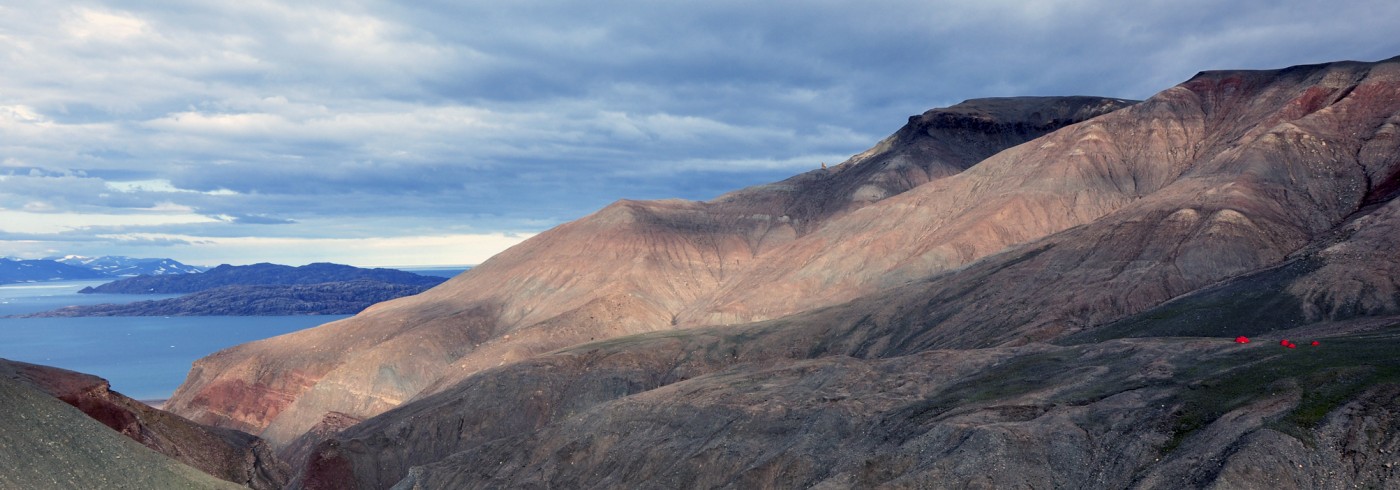Spent the morning resting and packing our fossils for transport back to Sweden. Everything needed to be marked with GPS coordinates, labeled and inventoried so that we have an accurate record for the registers in Uppsala. We have permission from the Greenland government to remove 400 kg of samples. This will be accessioned into the Museum of Evolution at Uppsala University, which already houses Sweden’s premier collection of Mesozoic vertebrate fossils.
The sun has been out for the last 48 hours so we are now working in T-shirts.
We have also done a few night visits to the closest outcrops (again don’t forget we have 24 hours of light).
Today we climbed down into an adjacent valley, Gaffeldal. There are lots of Musk Ox tracks along the ridges where the vegetation cover is thicker. We also came across the body of one unfortunate Musk Ox that seems to have slipped on the mud into a crevasse and died at the bottom.
The foot of Gaffeldal turned out to be an impassable cliff. There is also overhanging ice and a 20 m long ice tunnel blocking our passage down the Blue River to the oldest Permian strata on the coast.
We therefore returned our attention to Blockeln – Round 2 going to us this time.
Henning collected another beautiful Australosomus in the river, and we found ammonites, more coprolites and the skull of a large coelacanth, a type of archaic lobe-finned fish that is still alive today in waters off of southeastern Africa and Indonesia.
The best-known Triassic coelacanth from the Wordie Creek Formation is Laugia greenlandica.
We will try the Blue River again in a few days but another trip over the Stensiö Plateau is planned for tomorrow.

